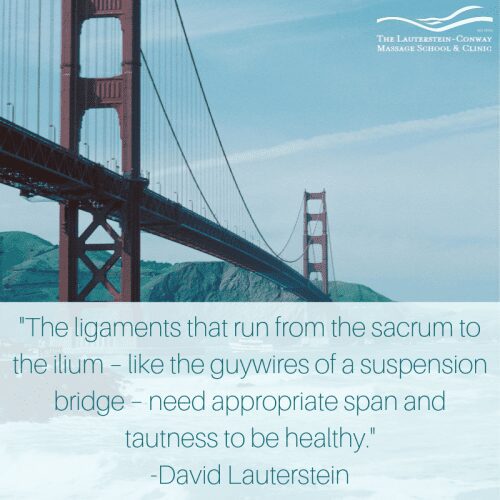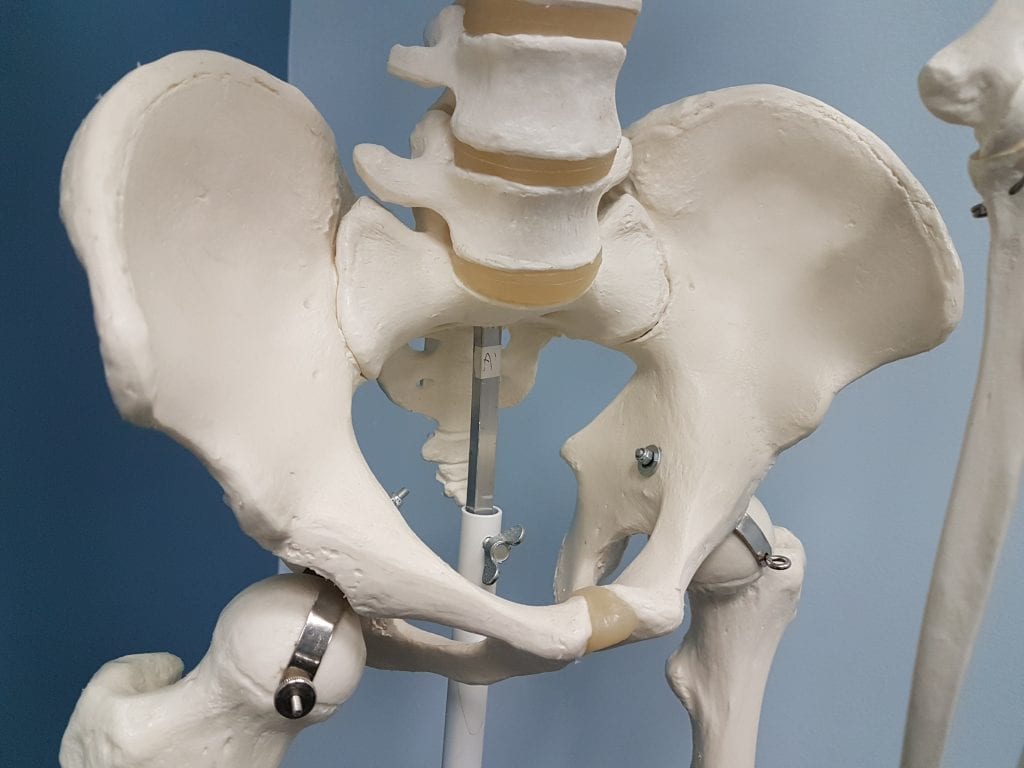What a fascinating world that of the sacro-iliac is!
By David Lauterstein
The SI Joint is the transitional joint from the axial to the appendicular system. On a deeper level, the axial system is, in a sense, who we are and the appendicular can be viewed as how we interact with the world around us. So the sacroiliac joint (SI) emobodies the interface of our being and our doing.
If the SI Joint is healthy physically, with appropriate length and span, then you experience some critically important breathing room between your being and your doing.
Another way to think about working with the SI Joint is by comparison to your scapula. The part of the ilium (the uppermost bone of the pelvis) to which the sacroiliac ligaments attach is called, poetically, the ala – which means “wing”. Just as your scapula are the “wings” of your upper extremity, the ala are the wings of the lower extremity.
However, how often do you feel the winged character of your pelvis?
When you work clearly with the soft tissues, bones, and joints of the sacro-iliac, you free the ala of the ilia. The low back and sacrum can then become, instead of a region of tension, a positive source of pleasure in our lives!
The SI Joint and Injuries
After being injured these ligaments often are prone to re-injury. Sprain of SI ligaments leaves slightly mis-woven scar tissue fascia.
The ligaments that run from the sacrum to the ilium – like the guywires of a suspension bridge – need appropriate span and tautness to be healthy. Sitting down all day compresses the SI joint and results in overly lax ligaments. Then any stray force – just leaning over and twisting a little – can sprain some of the ligamentous fibers.
Even something as slight as leaning over to tie one’s shoes can cause a reoccurrence.
When the SI ligaments are sprained, the nervous system overreacts and spasms the lower back muscles to provide extra stability when it sense this compromise. Then the patient has to deal with the attending splinting muscle spasm!
How to Treat Spasms
Some important ways to de-escalate the nervous system’s spasm is to do gentle work softening and lengthening the lower back muscles.
To prevent recurring sprains thorough cross-fiber work (aka deep transverse friction) is necessary. This is work perpendicular to the general direction of these ligaments running from sacrum to ilium. So the direction of the friction should be inferior to superior across the grain of the fibers.
Spend a little more time, not necessarily more force, in those strands of SI ligament where you feel a greater ropiness or fibrosity. This can help tremendous both in decreasing pain, spasm and preventing future problems.
Want to learn more about muscle-specific deep tissue work? Visit our continuing education calendar for upcoming workshop information.


